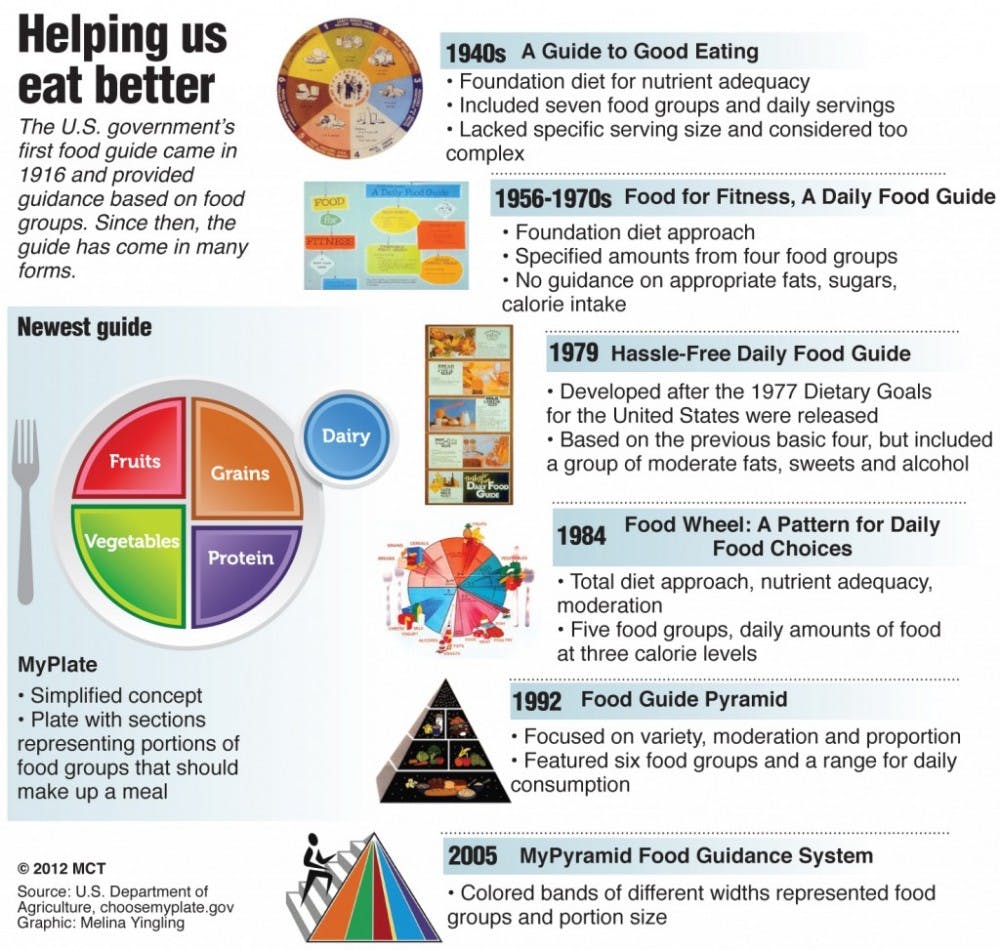High school seniors often joke about the “freshman fifteen.” Nonetheless, many teenagers approach college confident they can maintain a healthy body weight. But the “freshman fifteen” isn’t entirely fictitious. Many students, including those at Elon University, have a hard time adjusting to the dining options on campus and end up gaining weight because of a new eating environment.
One of the biggest struggles for many Elon students is how to find healthy alternatives on campus. With options like 1889’s “Killer Cookie,” a full dessert bar at the three all-you-can eat dining halls and the convenience of pizza and Chik-Fil-A in Moseley, it’s easy to fall into the habit of making poor eating choices. But despite what may seem like a lack of healthy options on Elon’s campus, it is possible to find tasty food with more nutritious value. And instead of stressing the obvious (choose the salad, not the burger!), here are some tips on how to take favorite on-campus foods and alter them to make them healthier.
Let’s start with breakfast.
Colonnades is one of the more popular breakfast spots on campus. With both hot and cold options available, there’s something for everyone. And while it’s easy to go straight for the cinnamon buns and donuts, starting off the day with a plateful of carbs and sugar isn’t good for the body or the brain.
Students craving cereal should steer clear of Lucky Charms and go for Cheerios or Corn Flakes. Add some banana slices and skim milk for a healthier option. Yogurt is also a good choice, in moderation. Instead of filing the bowl with granola, add strawberries or melon. Students in the mood for eggs should ask the staff for Egg Beaters, which have no yolks (and therefore less fat, calories and cholesterol). Ditch the bacon and cheese and load the omelet up with peppers, onions and tomatoes. Pancakes and French toast are tempting as well, and if it’s an occasional splurge, go for it. Just pass on the butter and syrup.
When lunchtime rolls around, students are often in a hurry to get to class and pick up something on the go. Students choosing Chick-Fil-A can make a simple switch from the Chick-Fil-A sandwich or nuggets to the chargrilled chicken sandwich or salad. It’s still chicken from Chick-Fil-A, but it’s not dipped in batter and fried in oil. Instead of the waffle fries, grab a piece of fruit. Craving Pangeos pasta? That’s OK, too. Ask to have no oil put in the pan, and request light or no sauce. And skip the Parmesan cheese at the end, as tempting as it might be.
A popular dinner venue is Varsity, where students can eat good food while watching a sports game. Just by looking at the menu, it’s clear Varsity has some unhealthy options. But it’s possible to transform a greasy burger and fries into a well-balanced entrée. With a few modifications, students who want a burger as their entrée can still be satisfied. For starters, ask for an open face burger. Having half a bun still gives the burger added taste and texture, but reduces the carbs and calories. Ask for fresh mushrooms instead of caramelized (which indicates they have been cooked in butter and/or oil), and skip the bacon and cheese. Stay away from condiments: ketchup, mustard and especially mayonnaise.
Choosing a healthy side can make a big difference in terms of the nutrition of the meal. At Varsity, ask for a piece of fruit or veggies instead of chips or fries. And wash down the meal with a cold glass of ice water. Choosing water over other beverages holds true for any meal. Cutting out soda, sweet tea and fruit juice is an easy change that yields positive results.
Eating healthier doesn’t have to mean eating bland and tasteless food, and it doesn’t require skipping out on breakfast or eating salad twice a day. It simply means making minor changes in day-to-day food selection.


